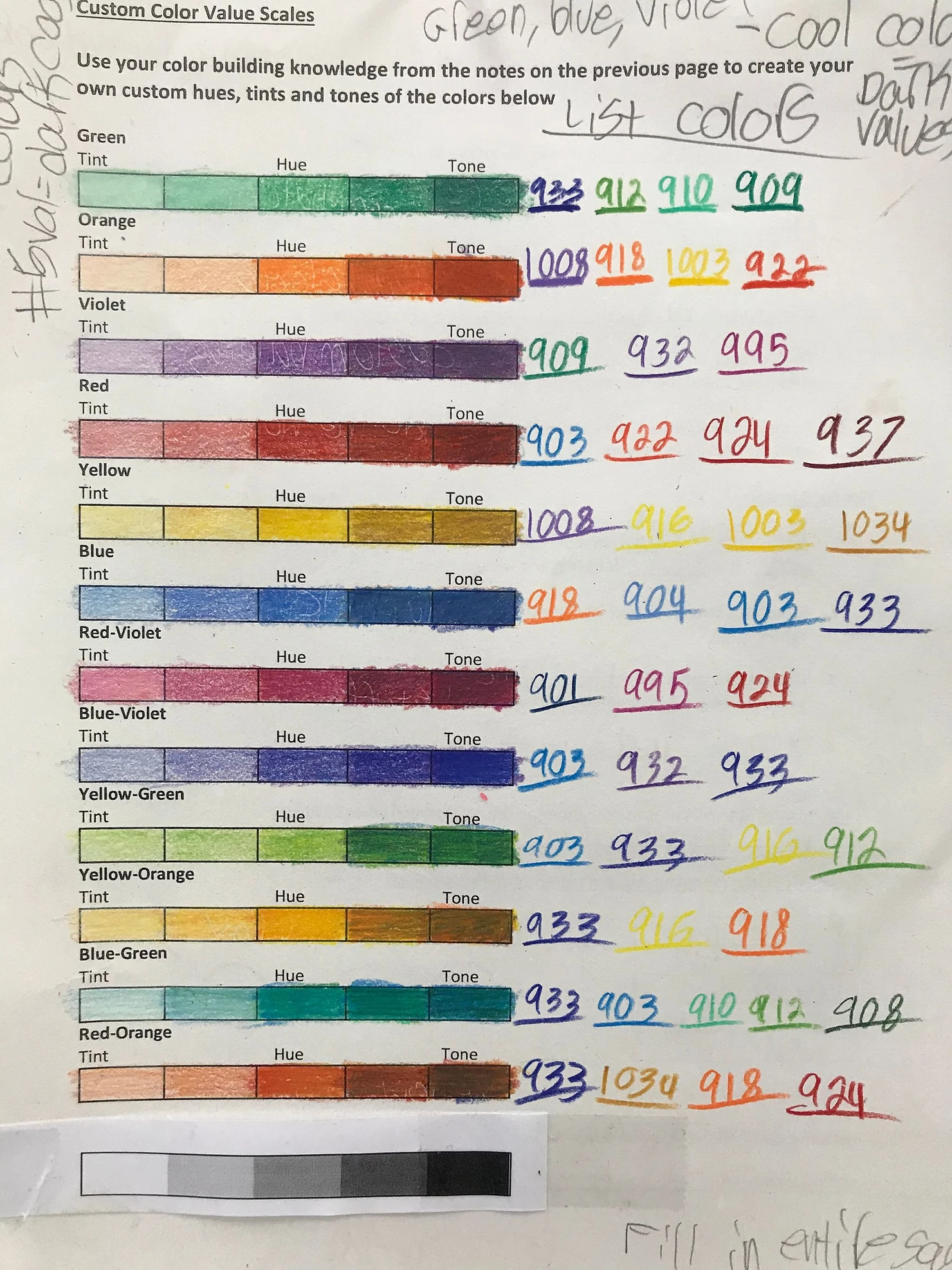Mastering Colored Pencil Techniques for Beginners
When I first started teaching colored pencil techniques to beginners, I quickly realized it wasn’t as easy as I thought. I handed out cool images, gave a two-week deadline, and waited for the magic to happen. But instead of magic, I was met with frustration—students struggled with their techniques, and most of them felt discouraged. Only a few excelled while the rest of the class limped through the process, asking to start over multiple times.
That experience led me to create a foolproof process that ensures success for all students, regardless of skill level. This process involves two important steps: understanding pencil application and mastering value creation.
The Colored Pencil Scaffold for Beginners
In my beginner art classes, such as Art 1 Foundations and Drawing 1, we approach colored pencil drawing as the final unit of a 6-part scaffold. This scaffold spans an 18-week semester with daily 90-minute blocks. Here’s how we build up to colored pencil techniques:
- Line Drawing Techniques
- Drawing with Basic Shapes
- Negative Space Techniques
- Graphite Pencil Shading
- White Pencil on Black Paper (High Contrast Drawing)
- Intro to Colored Pencil and Color Theory
In the Art 1 Foundations class, we condense the units to make room for painting techniques (watercolor and acrylic), so students can practice color theory before moving on to painting.
For resources on scaffolding and lesson plans, check out Mrs. T Fox’s Resource Store on TPT.
Common Beginner Struggles and My Solution
After analyzing student work, I realized the two main struggles were:
- Pencil Application: Students pressed too hard, leaving no room for blending or layering.
- Value Creation: Students intensified colors by pressing harder instead of creating darker values, which resulted in “flat” artwork.
To address these issues, I redesigned my approach. Instead of focusing on drawing complex objects, I started with the basics:
- How to apply colored pencil
- How to create value
This way, students could get to know their pencils before diving into detailed drawings.
Step 1: Mastering Value Scales with Colored Pencil
We begin with value scales—hues, tints, and shades—to help students grasp how to create darker values without pressing too hard.
No Black Pencils Policy: In my classroom, we don’t use black pencils. Instead, students learn to create dark values using cool undertones beneath the hues. This personalized approach gives each student a unique range of colors.
To reinforce learning, I provide:
- Fill-in-the-blank presentations
- Value scale worksheets
This ensures students understand the techniques before applying them. Once students master the scales, they’re ready for more complex drawings.
For worksheets and presentations to teach value scales, check out Mrs. T Fox’s Online Courses.
Step 2: Drawing Simple Forms—The Sphere
After mastering value scales, we move on to drawing simple forms like spheres. This exercise helps students practice smooth value transitions, a key component of advanced colored pencil work.
Here’s how I set them up for success:
- Provide a worksheet featuring two small spheres—an easy, non-intimidating task.
- Create video tutorials for students to revisit as needed.
This approach makes learning accessible and less stressful for students who need extra time to process the material.
Building Confidence with Simple Drawings
Once students are comfortable with colored pencil techniques, we move on to more creative projects.
- In Art 1 Foundations: Students start with a small, fun drawing—usually a gummy bear. We practice first, then move on to a candy-themed final drawing.
- In Drawing 1: Students tackle a larger project called Candy Ocean, which is more intricate and challenging.
Because students have learned foundational techniques, they approach these projects with confidence.
The Long-Term Benefits of a Strong Foundation
The structured process of learning colored pencil techniques has transformed not only my students’ artwork but also my teaching style. By focusing on foundational skills—value scales and simple forms—I’ve seen a dramatic improvement in student work.
These skills are now a core part of my lesson plans for every medium, including graphite pencil, oil pastels, watercolor, and acrylic painting.
Takeaway for Art Teachers
If you’re struggling to teach colored pencil techniques to beginners, focus on the basics first. Introduce value scales and simple forms like spheres before moving on to more complex projects.
This slow and steady approach builds confidence, ensuring that all students—no matter their skill level—can achieve success.
Explore More Resources and Stay Connected
1. Shop Mrs. T Fox’s Resource Store on TPT
Looking for ready-to-use tools to take your classroom or art program to the next level? Visit Mrs. T Fox’s Resource Store on TPT for exclusive resources, including value scale worksheets, project guides, and scaffolded lesson plans to transform your teaching.
2. Learn with Mrs. T Fox’s Online Courses
Want to dive deeper into colored pencil techniques, classroom management, or creative project planning? Check out Mrs. T Fox’s Online Courses for step-by-step lessons and actionable advice to help you succeed in your teaching journey. Start learning today and feel confident as you guide your students to success!
3. Follow Mrs. T Fox on Social Media
Stay inspired and up-to-date with the latest tips, resources, and behind-the-scenes highlights by following @mrs_tfoxresources on Instagram. Join a community of like-minded educators and discover fresh ideas to spark creativity in your classroom!
Be Among the First to Know
Join my email list to receive free art teacher resources, product updates, and workshop dates. As a subscriber, you’ll get first access to my professional development workshops and art teacher freebies!


